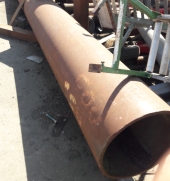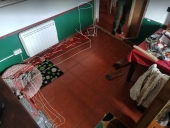
 7
7




 5
5




"You must be the change you want to see in the world." "First they ignore you, then they laugh at you, then they fight you, then you win." --Mahatma Gandhi
"Preach the Gospel always, and if necessary, use words." --Francis of Assisi.
"Family farms work when the whole family works the farm." -- Adam Klaus
 3
3




 1
1




 7
7




 4
4




 4
4




 3
3




 7
7




Silence is Golden
For all your RMH needs:
dragontechrmh.com
 1
1




 4
4




Silence is Golden
For all your RMH needs:
dragontechrmh.com
 4
4




 3
3















 6
6















 2
2




 3
3




 1
1




Fox James wrote:I think you would stand more chance with a 10” batchbox and a step ladder.
Vermiculite board might be available to you as it is widely available in Europe, it would certainly last long enough to do some testing but might not last long term.
I am all up for experimenting and I really hope you find some success but I think there are better ways.
 1
1




Phil Stevens wrote:Wrapping the core in CFB will help - not as much as using insulating firebrick but at least once the core gets up to operating temperature it won't be shedding so much heat. That would be a lower cost interim solution and might even do the trick.
 2
2




 5
5











 1
1




 5
5




 4
4




 3
3




 4
4




 2
2




 5
5




 3
3




 3
3








Cristobal Cristo wrote:That's much better result, but still too low. You could try wrapping the core on the sides and the bottom with some insulating material, but I think it will not be enough. You already have IFB bricks so you could try to build a 25 cm batchbox and see what happens. If the temperature rises to much more than 640 C then you will know which route to take.
 4
4




 2
2




 5
5




fraser stewart wrote:So I am hoping someone in the community can wade into this and help me with understanding this.
My question is. Does extending the length of the firebox so that more wood is able to be burnt have an effect on the power output?
I.e does more wood in the firebox make more BTUs and raise the temperature higher?
Would multiple burns. one after the other before the stove cools substantially be able to add more heat?
Or is it limited to the volume of space in the kiln.
The core could of course be scalled up but then I would need a large kiln so....
Do I need to make a Hybrid wood and gas to reach those temps.
O
 4
4




 1
1




Glenn Herbert wrote:No matter the size of your firebox, a pottery kiln will need to be fired without interruption from start to finish. Not just back to back firings, but reloading before the fire burns all the way down so heat input never falters.
You also need to be able to start the first fire slowly so the kiln temperature does not rise too fast and explode the pots. That is a matter for control rather than capacity, though the larger the firebox compared to the kiln the trickier it is to meter it. In my wood fired, cob-built kiln, I start the fire in front of the firebox and gradually over the course of an hour or so move it inside for gentle temperature rise. The firebox is about 4' long and 16" high and wide.








Cristobal Cristo wrote:Fraser,
Double core will be very impractical. I would try building a 25 cm batch box with shortened riser.
Is your core hot to the touch on the outside when reaching 640 C in the kiln?

|
nothing beats office politics like productivity. Or maybe a tiny ad:
A rocket mass heater is the most sustainable way to heat a conventional home
http://woodheat.net
|




